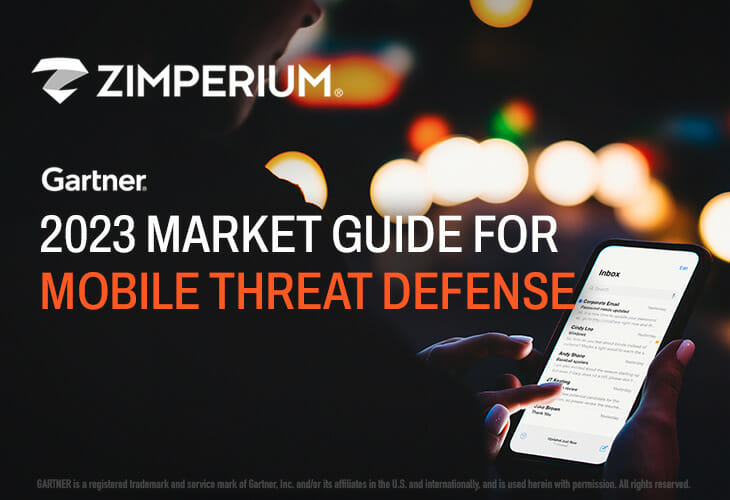
Enterprise Mobility Management (EMM) is a set of technologies and practices that allows organizations to manage and secure mobile devices, apps, data, and other resources within their enterprise. App developers are also crucial in ensuring their mobile apps meet enterprise customers’ security and management needs. While EMM is usually associated with IT administrators or security teams, they play a vital role in ensuring their mobile applications are compatible with EMM.
How Mobile App Developers Use Enterprise Mobility Management (EMM)
Here’s how app developers use enterprise mobility management:
- App Developer Guidelines: App designers must be aware of the EMM policies or guidelines set forth by the organization or enterprise customer. These guidelines can include security requirements, data encryption standards, authentication methods, or app distribution protocols.
- Security Integration: App Developers must integrate security features in their mobile apps to comply with EMM policies. Integrate security includes encryption of sensitive information, implementing secure authentication, and enabling features like remote wipe and Data Loss Prevention (DLP).
- Compatibility testing: Developers must test their apps to ensure compatibility on EMM-managed devices. EMM solutions enforce policies that can affect app behavior. It’s essential to verify that your app works correctly within these constraints.
- App Configuration: EMM solutions provide app configuration capabilities that allow IT administrators to configure app settings remotely. App developers should design their apps so that they can support these configurations. An app’s configuration capability is beneficial for customizing the behavior of apps within an enterprise.
- App wrapping: In some instances, app developers may use EMM tools or SDKs to “wrap up” their apps and add EMM-specific management and security features. App wrapping can include app encryption, VPN integration, and single sign-on support.
- App distribution: Enterprises use EMM platforms for app distribution and management across their device fleet. Developers need to understand the app distribution process in the EMM ecosystem, including app store integration and deployment options.
- Security Test: Developers must conduct thorough security tests, including penetration testing, to identify and address vulnerabilities on EMM-managed devices. Security testing ensures the app’s security when used in enterprise environments.
- Documentation: Provide clear and comprehensive documentation to IT administrators and support staff within the enterprise. This documentation should include app deployment, configuration, troubleshooting, and any specific requirements relating to EMM.
- Continuous Updates: Stay informed of changes and updates to the EMM landscape. EMM solutions change over time, and developers must update their apps to maintain compatibility.
- User Experience: While security and management in enterprise apps are essential, developers must also prioritize the user experience. It is important to balance security and usability to ensure employees can use the app effectively within the enterprise environment.
Enterprise mobility management is critical in managing and securing enterprise mobile apps. App developers need to work closely with IT and security teams to ensure that their apps are compatible with EMM solutions and meet the standards and requirements set by the organization. This collaboration ensures enterprise mobile apps are both user-friendly and secure.
Types of Enterprise Mobility Management (EMM)
Enterprise mobility management offers solutions in differing scope and capability, making them suitable to meet the needs of different organizations and situations. Here are the most common EMM solutions and the cases where they work best.
Mobile Device Management (MDM)
- Best for: Organizations who need to control devices comprehensively, including configuring settings and policies and remotely managing features.
- Use cases: MDM can be used when employees have corporate-owned devices like rugged devices for field service or manufacturing industries.
Mobile Application Management (MAM)
- Best for: Companies who want to focus more on managing and securing their mobile apps than the entire device.
- Use Cases: MAM is well-suited for organizations that support bring-your-own-device (BYOD) policies. It allows the secure distribution and administration of corporate apps on employee-owned devices.
Mobile Content Management (MCM)
- Best for: Organizations primarily concerned with the security and management of corporate data and susceptible documents.
- Use cases: MCM can be valuable to businesses that deal with sensitive data, such as legal firms or healthcare organizations where protecting data is paramount.
Unified Endpoint Management (UEM)
- Best for: Enterprises that want to manage and secure various endpoints, including smartphones, tablets, and laptops.
- Use cases: UEM provides centralized management and security for all endpoints in organizations with diverse device fleets.
Mobile Threat Defense (MTD)
- Best for: Companies that protect mobile devices from security threats such as malware, phishing, and network vulnerabilities.
- Use cases: MTD solutions can be essential in environments with mobile security risks, such as the financial services industry or industries subject to strict regulatory compliance.
Identity and Access Management
- Best for: Organizations prioritizing secure access control, user authentication, and mobile apps and services.
- Use cases: IAM is a valuable tool to ensure that only authorized users can access corporate resources, making it suitable for various industries.
Enterprise App Stores
- Best for: Enterprises who want to create curated app marketplaces for their employees, making it easy to distribute and manage corporate applications.
- Use cases: App Stores are helpful to organizations that want to control the app ecosystem installed on employee devices and ensure only approved apps are installed.
Containerization and App Wrapping
- Best for: Developers and organizations looking to add an extra layer of security to apps or data on mobile devices.
- Use cases: Containerization or app wrapping is useful when protecting specific apps or data but not managing the entire device. It’s commonly used in BYOD scenarios.
The enterprise mobility management solution chosen by an organization depends on its specific goals, security requirements, device policies, and the types of devices used by employees. Many organizations will combine these EMM types to create a mobile management and security solution tailored to their needs.
